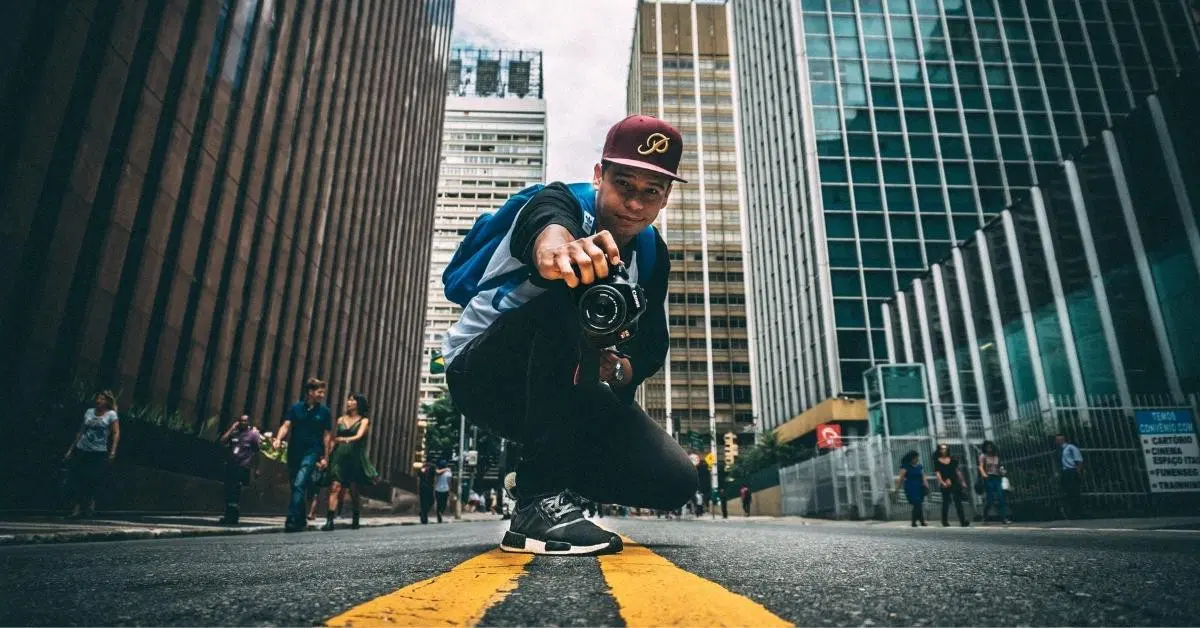
Today, photography is one of the most exciting branches of art, both amateur and professional. Moreover, we can say that it has increased its popularity by revealing an area such as mobile photography. But when business becomes a professional occupation, we have to approach photography more broadly than it seems. Because professional photography; is an area where competency, knowledge, and ability elements combine and move forward together. Suppose you want to get a job in this field. In that case, you should already be open to extensive information about the field of photography. Photography techniques, professional photography experiences, and field knowledge are sufficient steps for the profession you want. But what can be done for these steps? If you're going to learn the details, let's start to explain the 5 actions that will help you on the way to professional photography.
5 Workable Steps to Professional Photography
A professional job often requires knowledge and competence. Knowledge and competencies in photography are based on practical knowledge rather than theoretical knowledge. In other words, being familiar with the technical use of the camera, applying the rules of composition, and learning photography techniques are essential competencies in photography. In addition to these elements that will positively affect your progress in the field of professional photography, you also need to follow some tips. We will continue our content with information to help you take firm steps in professional photography.
Learning Applied Information with Photographing Techniques
The first step that will help you and give you a severe foundation is to learn photography techniques that combine theoretical and practical knowledge. Photographing designs show you what methods you can apply for professional photography. Shooting techniques that you can use in photography and video show how you can project an image into your frame. You can take professional photos by learning basic and advanced information such as light, composition, the main elements of the camera. So, what are the photography techniques that open the door to professional photography, and what features are required to apply the shooting techniques?
You must first learn to use the camera to understand the general discipline of shooting techniques. Then, you can explore what you can do with your camera by learning about the settings you will use for shooting, such as aperture, shutter speed, and ISO. Photographing techniques give you tips on shooting for the subject you can include in your frame. For example, you can take a photo with a blurry background or a broad view by taking advantage of the depth of field. Again, you can emphasize your main subject by paying attention to the use of light. For the shooting techniques you will apply, you should know how to use lenses, media, and other camera equipment in photography, apart from the camera. For example, for advertising and fashion shoots, you should use lenses with different focal lengths. For portrait-heavy shots, you should get 50mm zoom lenses. In short, try to expand and advance their knowledge of photography techniques.
Tip: Be sure to venture into the video field as you build your hands-on photography knowledge. Today, mastering video shooting techniques and editing is essential for professional photography competencies.
Advanced Photography Training
In professional photography, the mocking-scholarship debates are also evident. Especially in some photography branches that require a job at a specialist level, being educated becomes the desired feature. This situation is that advanced technical and theoretical knowledge is transferred with educational options. Although advanced expertise in photography can show itself with experience, previous field education is considered more important. So, what trainings can we recommend for advanced professional photography knowledge?
It is not right to limit education options only to university. However, the education level where you can make the most accurate observations about theoretical and practical photography will be university education. However, you can also look at the photography education levels that work hard for the direct transition to experimental photography. With distance or face-to-face training options, you can take advanced photography courses and pave the way to professionalism. Suppose you are determined to take a class. In that case, you should carefully examine the course contents and ensure that you have advanced shooting techniques and photography knowledge.
Tip: When choosing a course, try to select hands-on institutions and various workshops or clubs. Also, examine the CVs and jobs of photography instructors and determine which areas they can support you.
Choosing a Professional Specialization
When photography first emerged, it was viewed only as a reflection of reality and a non-artistic practice. As time passed, other art movements and the development of technical knowledge broadened the horizons in photography. Today, we come across photography fields that include different branches of expertise. The sub-branches we encounter in professional photography consist of advanced applied knowledge. So sub-branches in photography; consist of the factors that will enable you to become a professional photographer, including light, equipment support, photographer's eye, and field-specific shooting techniques. By concluding your area of expertise, you can engage in more productive and more original photography work.
Tip: Try not to make hard decisions about choosing your specialty. Surely there will be photography areas you are closer to. Still, you can clarify your decision after taking different field training. In addition, if you will work in business areas such as an agency or studio, you need to acquire knowledge from specific sub-branches of photography and put it into practice.
Amateur or Professional Photography Experiences
On the way to professional photography, your work as an amateur is also a significant gain. The photos you take practically are essential for measuring the photography information by trying it. In addition, amateur photography feeds you so that your interest in photography does not fade. You can also advance closely with photography works by progressing from amateur photography. You can gain professional knowledge and experience by working as a photographer, camera assistant, or freelance photographer.
Tip: You can browse freelance sites to earn income with amateur photography experiences. By developing your photography eye, you can enter the field of stock photography or studio photography. You can also gain more revenue and experience if you combine the photography business with the video field.
A Remarkable Portfolio in Photography and Visual Fields
If you have completed the necessary training and professional photoshoots, it is time to prepare a portfolio. A portfolio that demonstrates your experience and interest in photography is best to showcase your work. A portfolio may be requested before the CV for visual-oriented jobs. Being aware of this, you should list every photographic work you take and take part in, in the form of a portfolio. You can directly show your portfolio preparation for the relevant job postings and prove that you are competent in the job.
Hint: The digital portfolio is always more eye-catching than the traditional portfolio formats. Since most photography and digital agencies you will apply to will ask you for a digital-based portfolio, you can create an exciting photography presentation by opening a digital portfolio account in advance.
If you want, you can submit a portfolio through Behance, Flickr, or online portfolio sites. You can also prepare a WordPress-based place to present a portfolio on your own website.
We talked about 5 essential steps that will open the way for professional photography. As long as you increase your knowledge and experience, you can continue to earn income in the photography field. Again, by combining your photography knowledge with other visual areas, you can get more original works and larger payments.
Frequently Asked Questions
What Steps Should I Take for Professional Photography?
For professional photography, you must first learn the mainly applied knowledge of the field. Then, you should be familiar with photography techniques, equipment used, sub-branches of photography, and composition rules. Then you can have experience in areas related to photography, starting from amateur photography.
How to Become a Professional Photographer?
Photography education is essential for the professional photography profession. In addition to advanced training, experience is also one of being a professional photographer. In addition, today, professional nomenclatures covering sub-branches of photography are valid rather than a general definition such as a photographer.
What is Professional Photography Techniques?
Shooting techniques used in photography; light usage, camera settings, exposure types, and general composition rules. You can apply training subjects such as depth of field, strategies you can use with light, exposure, and color adjustments in your photos by learning photography techniques.


